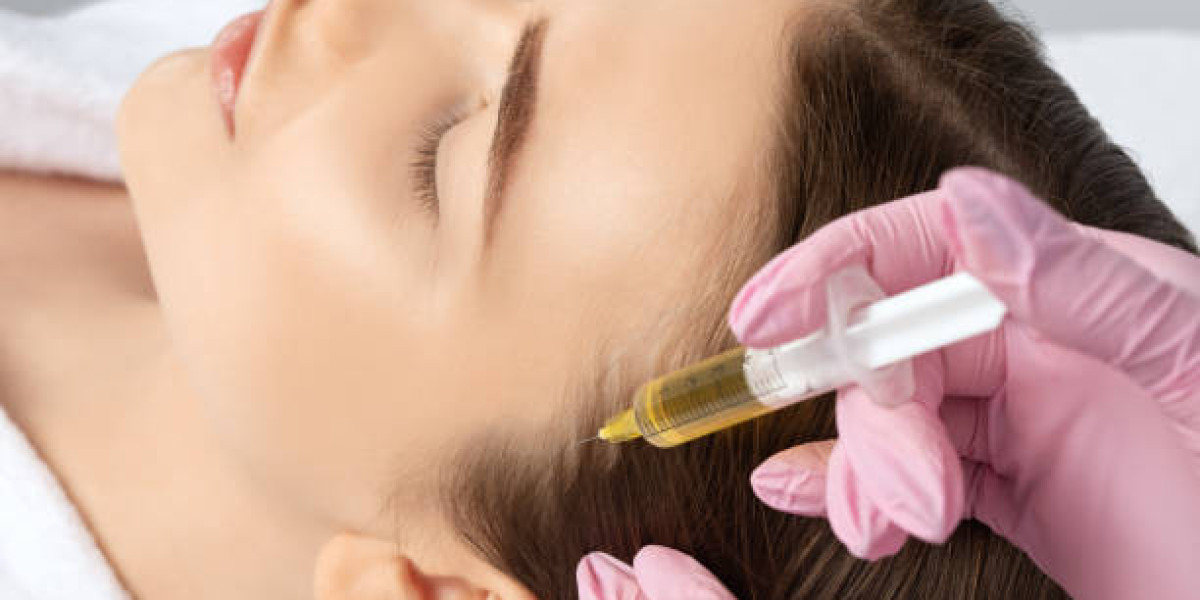Hair loss can be a challenging issue to deal with, affecting both men and women of all ages. While there are numerous treatments available on the market, one that has gained attention in recent years is Platelet-Rich Plasma (PRP) therapy. PRP for hair loss is a promising option for those looking to stimulate hair growth and combat thinning hair. In this blog post, we will explore the role of PRP in hair loss treatment, including how it works, its benefits, what to expect during the procedure, and potential side effects.
Understanding PRP and Its Origins
Platelet-Rich Plasma (PRP) therapy finds its roots in the medical community, where it has been utilized for decades to support the healing of injuries and the regeneration of tissues. This innovative treatment leverages the patient's own blood, specifically the platelets known for their high concentration of growth factors essential for healing. The concept behind PRP therapy is based on amplifying the body's natural healing mechanisms. Originally, it was applied in various medical fields including orthopedics, dentistry, and reconstructive surgery due to its effectiveness in promoting recovery. Its application for hair loss is a relatively recent development, evolving as researchers recognized the potential of growth factors in platelets to rejuvenate hair follicles, thereby enhancing hair density and growth. This transition from wound healing to hair restoration represents a significant advancement in the treatment of hair loss, highlighting the adaptability and potential of PRP therapy in medical science.
How Does PRP Work for Hair Loss?
The mechanism of PRP therapy in addressing hair loss centers on the activation of hair follicles through the injection of growth factors into the scalp. These growth factors, abundant in platelets, play a pivotal role in cell regeneration and tissue repair. When introduced to areas of thinning hair, they work by enhancing the blood supply to the follicle, which is crucial for promoting hair growth and extending the growth phase of the hair cycle. This process not only encourages the growth of existing hair but also potentially revives dormant hair follicles, leading to increased hair density. The procedure harnesses the body's innate healing processes to treat hair loss from within, offering a targeted approach that focuses on revitalizing the scalp's health and fostering the conditions necessary for hair regrowth.
The Benefits of Choosing PRP Treatment
Opting for PRP therapy offers a host of advantages for individuals grappling with hair loss. Primarily, this treatment method emphasizes a natural healing process, utilizing the patient's own platelets to rejuvenate the scalp and encourage hair growth. Its non-surgical nature stands out as a significant benefit, providing a minimally invasive alternative to traditional hair transplant methods. This aspect makes PRP an appealing choice for those seeking solutions with less risk and recovery time. The procedure's efficiency is another key advantage; it can be performed within an hour, allowing patients to return to their daily routines with minimal interruption. Moreover, the discomfort associated with PRP treatments is typically low, making it a comfortable option for many. As a cutting-edge therapy, PRP also opens the door to ongoing advancements in treatment methodologies, offering hope and potential for even better outcomes in the future.
What to Expect During the PRP Procedure
When preparing for a PRP session aimed at addressing hair loss, patients will undergo a simple, yet meticulously executed procedure. Initially, a health professional will draw a small quantity of the patient's blood, similar in amount to what is taken during a routine blood test. This sample is then placed into a centrifuge, where it is spun at high speed to separate the platelets from other blood components, resulting in the concentration of platelet-rich plasma. Following the preparation of PRP, the practitioner uses a fine needle to inject the plasma directly into the scalp at areas experiencing hair thinning or loss. This step is carried out with precision across the target area to ensure even distribution and effectiveness of the treatment. Throughout the procedure, which generally lasts between 30-45 minutes, comfort measures are taken to minimize any discomfort, often making the experience tolerable for patients. Local anesthesia or a numbing cream may also be applied to the scalp prior to injection to further ease any potential discomfort. After the session, patients are able to leave the clinic and are typically able to resume normal activities, with specific aftercare instructions provided by their healthcare provider to support optimal recovery and results.
Potential Side Effects and Considerations
While PRP therapy for addressing hair loss is largely deemed safe, patients should be aware of the minor risks and temporary side effects associated with the procedure. Following treatment, it's common for individuals to encounter slight bruising, itching, or tenderness around the areas where the injections were administered. These side effects are generally short-lived, resolving on their own within a few days post-procedure. Additionally, there may be a risk of infection, as with any treatment involving injections, although this is rare due to the sterile techniques employed during PRP therapy. Individuals with certain health conditions or those on specific medications may not be ideal candidates for PRP treatments. Therefore, a thorough consultation with a healthcare provider is essential to evaluate one's suitability for this therapy, discuss any potential risks, and address all concerns prior to proceeding with treatment.
Conclusion
PRP therapy stands out as an innovative and effective solution for individuals struggling with hair loss. By leveraging the natural healing capabilities of the body's own platelets, this treatment method promotes hair regrowth and improves scalp health in a minimally invasive manner. With its benefits ranging from minimal recovery time to the potential for revitalizing dormant hair follicles, PRP has garnered significant interest and satisfaction among patients seeking alternatives to traditional hair restoration methods. For those contemplating this therapy, consulting with a healthcare professional is crucial to ensure its suitability for your specific condition and to discuss any concerns. Embracing PRP could be a step towards achieving fuller, healthier hair.





